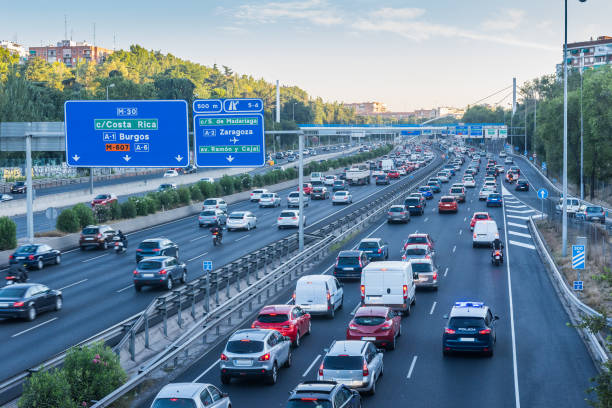National Highways is aiming to have smart motorway stopped vehicle detection (SVD) technology working effectively by July of this year. SVD technology is radar-based technology that is on every all lane running (ALR) smart motorway where the hard shoulder has been permanently converted to a live traffic lane. It uses radars to detect vehicles stopped on the roads. As part of a series of safety measures, the system was retrofitted to every ALR smart motorway last year, but a report by the Office of Rail and Road in December revealed it was “not working as well as it should”. Overall detection rates are below National Highways’ minimum requirement of 80% and the required average time to detect stopped vehicles in less than 20 seconds is not being met. Four out of five of National Highways’ regions with ALR smart motorways are not meeting this requirement, achieving between 43 and 65 seconds. National Highways chief executive Nick Harris told MPs on the Transport Committee this week that the technology will achieve the performance specifications by the summer. “I have a very closely managed programme going on at the moment to ensure that the systems as we’ve already implemented, and we’re ongoing with commissioning the new ones, will achieve the performance specification later this year,” he said. “So I think we’ve set July as the as the target for that. But this is the largest implementation of this technology in the world. We’re the first to be doing this. It’s an important addition to road safety. And we’re very committed to getting it to to that standard, but it is adding significantly to road safety at the moment.”

Harris Added: “Many of The of The Schemes Are Not Meeting.
the very challenging performance specifications we set. Two of the most prevalent issues we’re dealing with, one is the number of false alerts, which is an issue for the operators. “So it’s spotting things but the the operators have a higher workload than is ideal. And the other is the time it takes the system to alert. The target is 20 seconds and we’re achieving something like 40 seconds at the moment. But it is working. And it is adding significantly to the tools that we have available to further improve road safety.” A total of 11 smart motorway schemes have been put on ice as a result of the government’s decision to halt the rollout of the roads until a full five years’ worth of safety data is available. The Department for Transport (DfT) has said the pause applies to ALR schemes “yet to commence construction”. This comprises four schemes: the M3 Junctions 9–14, M40/M42 interchange, the M62 Junctions 20–25, and the M25 Junctions 10–16. At some of these locations, the DfT will continue to invest in additional safety measures by making improvements to the central reservation. The DfT will also pause the conversion of seven dynamic hard shoulder (DHS) schemes to ALR until the next Road Investment Strategy, so that alternative operating approaches can be considered. This involves the M42 Junctions Junctions 4-7, M1 J10-13 DHS, M4 Junctions 19-20/M5 Junctions 15-17, M6 Junctions 4-5, M6 Junctions 5-8, M6 Junctions 8-10a and M62 J25-30. While further data is being collected, National Highways is continuing work to complete other schemes that are in construction, which will all open with increased safety measures. The M27 smart motorway upgrade between junctions 4 (Southampton) and 11 (Portsmouth) was completed in June 2022. The £244M upgrade carried out by McCann has seen 13 new safety refuge areas installed on the stretch, with an average distance between them of 2km. This is despite the Transport Select Committee’s recommendation in its smart motorways report, which was backed up by AA, that they should be no more than 1.6km (1 mile) apart. National Highways says it will “consider” retrofitting more frequent safety refuge areas at a later time. Meanwhile in December, a 51km smart motorway upgrade stretching from Greater London across Berkshire was completed. As part of a phased opening, the eastern section of the M4 between junctions 3 (Hayes) and 8/9 (Maidenhead) has now moved to 70mph. This means that the whole scheme – from junction 3 to junction 12, a full 51km – is now fully open.


Recent Comments